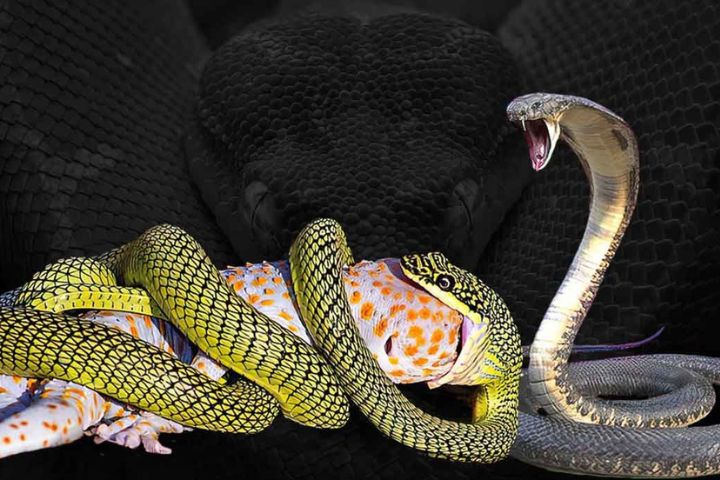The term most poisonous snake and most venomous snake is often misunderstood. In the animal world, “poisonous” refers to creatures that cause harm when touched or ingested, while “venomous” refers to those that inject toxins through bites. True poisonous snakes are rare, as most dangerous snakes are venomous. Some species, like the garter snake, might retain mild toxins from their prey, but they are not harmful unless ingested by predators. The idea of a most poisonous snake is more myth than reality, with the real danger coming from venomous species like the Inland Taipan and King Cobra.
These reptiles have evolved over millions of years to develop potent venom as a means of hunting and self-defense. The most venomous snake in the world, the Inland Taipan, is a prime example of this evolutionary success. Native to the arid regions of Australia, this snake has venom so toxic that a single bite can potentially kill up to 100 adult humans. Despite its title as the most venomous snake, the Inland Taipan is incredibly reclusive and rarely interacts with humans.
The Power of the Most Venomous Snake’s Venom
The venom of the most venomous snake is a complex cocktail of neurotoxins, hemotoxins, and mycotoxins. These components work in unison to disrupt the nervous system, cause rapid blood clotting, and lead to severe muscle damage.
Even though the most venomous snake possesses such lethal venom, human fatalities are almost unheard of due to the snake’s secretive behavior and the effectiveness of available antivenom.
Other Highly Venomous Snakes
Beyond the Inland Taipan, other contenders for the title of the most venomous snake include the Black Mamba, known for its speed and highly aggressive nature.
The Black Mamba, found in Africa, can deliver a bite that can be fatal within hours if not treated. The King Cobra, the longest venomous snake, can inject large amounts of venom in a single bite, capable of killing a large mammal.
Identifying the Most Poisonous Snake
The term most poisonous snake often leads to confusion. In scientific terms, “venomous” refers to animals that deliver toxins through a bite, while “poisonous” refers to organisms that are harmful when touched or ingested.
However, snakes are generally not classified as poisonous, which makes the term most poisonous snake somewhat inaccurate.
Misconceptions About the Most Poisonous Snake
Despite this, the most poisonous snake is sometimes mistakenly used to describe extremely venomous snakes. It’s important to clarify that when people refer to the most poisonous snake, they are often actually referring to the most venomous snake. For instance, the Inland Taipan, while being the most venomous snake, is sometimes incorrectly called the most poisonous snake due to its deadly venom.
Understanding this distinction between venomous and poisonous is crucial when discussing snake species. The most venomous snake delivers its toxins through a bite, while the concept of a most poisonous snake would imply danger from ingestion or touch, which is not typical of snakes.
The Risks of Encountering the Most Venomous Snake
Encounters with the most venomous snake are rare, and bites are even less common. The most venomous snake is generally shy and prefers to avoid human contact, which significantly reduces the risk of a dangerous interaction.
However, if an encounter with the most venomous snake occurs, it is crucial to stay calm and slowly back away to avoid provoking the snake.





GIPHY App Key not set. Please check settings